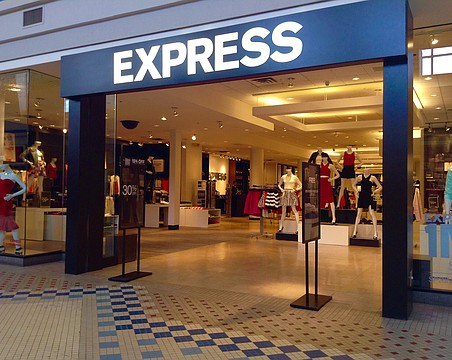Times are so tough that Dairy Queen is shrinking its smallest Blizzard in half.
But just because DQ's signature ice-cream treat is shrinking doesn't mean the company's revenues or profits will do the same. International Dairy Queen is counting on franchisees like the Kraus family in Fort Myers to determine whether a new “Mini Blizzard” can drive more business to its stores.
Kraus Foods, which owns nine Dairy Queen stores on the Gulf Coast, is one of several franchisees around the country testing the new Blizzard size. The 6-ounce cup is half as big as the smallest 12-ounce Blizzard. In a special agreement with the company, Kraus is giving Dairy Queen unfettered access to its registers so it can measure customers' purchases.
If it's successful, the new Mini Blizzard could prove that bigger isn't always better. In fact, making smaller portions could drive more business by attracting customers more frequently.
Making any changes to the Blizzard is risky business. By itself, the Blizzard generates $700 million in revenues a year for Dairy Queen, nearly a quarter of its estimated annual sales.
“With $700 million, you don't want to make a mistake,” says Michael Keller, chief branding officer with International Dairy Queen. The company is part of Berkshire Hathaway, the financial empire controlled by billionaire Warren Buffett.
In an era where supersizing has hit every fast-food outlet, it seems counterintuitive that selling smaller portions might drive more revenues and higher profits. But franchise owners Ron Kraus, 53, and son John Kraus, 26, say results so far are promising.
Dreaming of a mini blizzard
The Mini Blizzard has been two years in the making, driven in part by the recession.
But the sour economy isn't the only reason for introducing a smaller size. The Fat Police are out in force, urging people to eat less and exercise more.
Still, despite these trends, bringing a miniature version of DQ's signature treat isn't without peril. For starters, there's the risk that most customers will order the less-expensive Blizzard, cutting into overall sales of a well-established brand.
Dairy Queen executives started researching the mini size by asking the 2.2 million members of the Blizzard Fan Club what they thought. These are dedicated Blizzard-consuming people who signed up on the company's Web site to receive promotions for the treat.
“What's apparent in the last few years is everybody is looking for more value,” says Keller. “They want to feel good about what they get, given what they're paying.”
Keller cautions that price isn't the sole factor. Indeed, the profit margins are better on the Mini Blizzard than the small size when measured on a price-per-ounce basis. At the Krauses' stores, a Mini Blizzard costs $2.49 for 6 ounces, compared with $3.49 for the 12-ounce small Blizzard. That's important when the cost of dairy products has risen as fast as it has lately.
But boosting the average size of a customer check is a good thing, too. A good cashier can persuade a customer that he can afford a bigger small Blizzard for $1 more than a mini. Here's where the “feel good” part kicks in: Doubling the size of a mini to a small for just $1 sounds like a good deal even though the customer is paying the same price as before for a small Blizzard.
The Kraus franchise rewards employees who boost a store's average check. “They try to beat what they did last year,” Kraus says. Managers of successful restaurants decide whether to hand out cash or spend the bonus on a pizza party or a day at the movies.
A blizzard of success
Since they started testing the Mini Blizzard at select franchises last year, Dairy Queen executives say initial indications are that stores are selling more Blizzards than before.
Already, nearly two years in the planning, the Krauses say nearly a quarter of their Blizzard sales are in the smallest size, much higher than expected. “For us, the surprise was how popular it was,” says Kraus.
Kraus and other franchisees are finding that customers are just as likely to trade up to a bigger size than trade down to the smallest size. For example, instead of a cone of ice cream, a customer might spend a little more for a Mini Blizzard. “I did expect trade-down,” Kraus concedes.
And some customers are buying Mini Blizzards when they might not have bought a dessert at all in the past. For example, a customer who usually orders a hamburger only may now be tempted to order a Mini Blizzard because of the smaller price and size.
It only takes four Mini Blizzard sales to roughly equal three small Blizzards. Kraus says he would have considered the test a success if 10% to 15% of Blizzard sales were minis. With television advertising, that number comes close to 25%.
While neither Kraus nor Dairy Queen executives will reveal specific results of the Mini Blizzard so far, they say frequency of visits have increased since they introduced a smaller size.
Sales of Mini Blizzards alone don't indicate a winner. Keller says he's looking for overall sales of all ice cream products to rise as a result of the introduction of a new Blizzard. “If we put this on the menu, is it going to grow franchisee sales and profitability?” he asks.
Testing under pressure
Fortunately, franchisees don't need to buy much new equipment to make the new Mini Blizzard. Training employees is relatively easy because they already know the technique for making a blizzard.
Still, unexpected challenges may crop up. “You just don't know what's going to happen until you get the retail crew under pressure during the busy lunch hour,” says Keller. That data is just starting to come in.
What's more, the unusual weather in Florida this winter may skew the results. “We have to be careful looking at overall sales,” says Keller.
The company has full access to the Krauses' cash registers, so it can drill down and analyze the results. For example, corporate executives can immediately gauge the impact of television advertising on sales. “Retail is detail,” Keller says.
Testing is likely to last through this year. Although it might be popular in Florida, the Mini Blizzard could be a bust elsewhere and the company may not roll it out nationally. Kraus isn't worried about the outcome. “You can't fall in love with something you don't own,” he says.
The Kraus family has always been at the forefront of testing new products for the franchise system.
For example, their franchise was among the first to build DQ Grill & Chill restaurants. They also created the popular happy hour from 2 p.m. to 4 p.m. when everything you can consume through a straw is half off the price. “You can't be afraid to try things,” says Kraus. “If you never evolve, you might fall behind.”
While the restaurant industry has suffered like most businesses, Kraus says ice cream is still holding its own. “We're glad we don't sell cars,” he chuckles.






